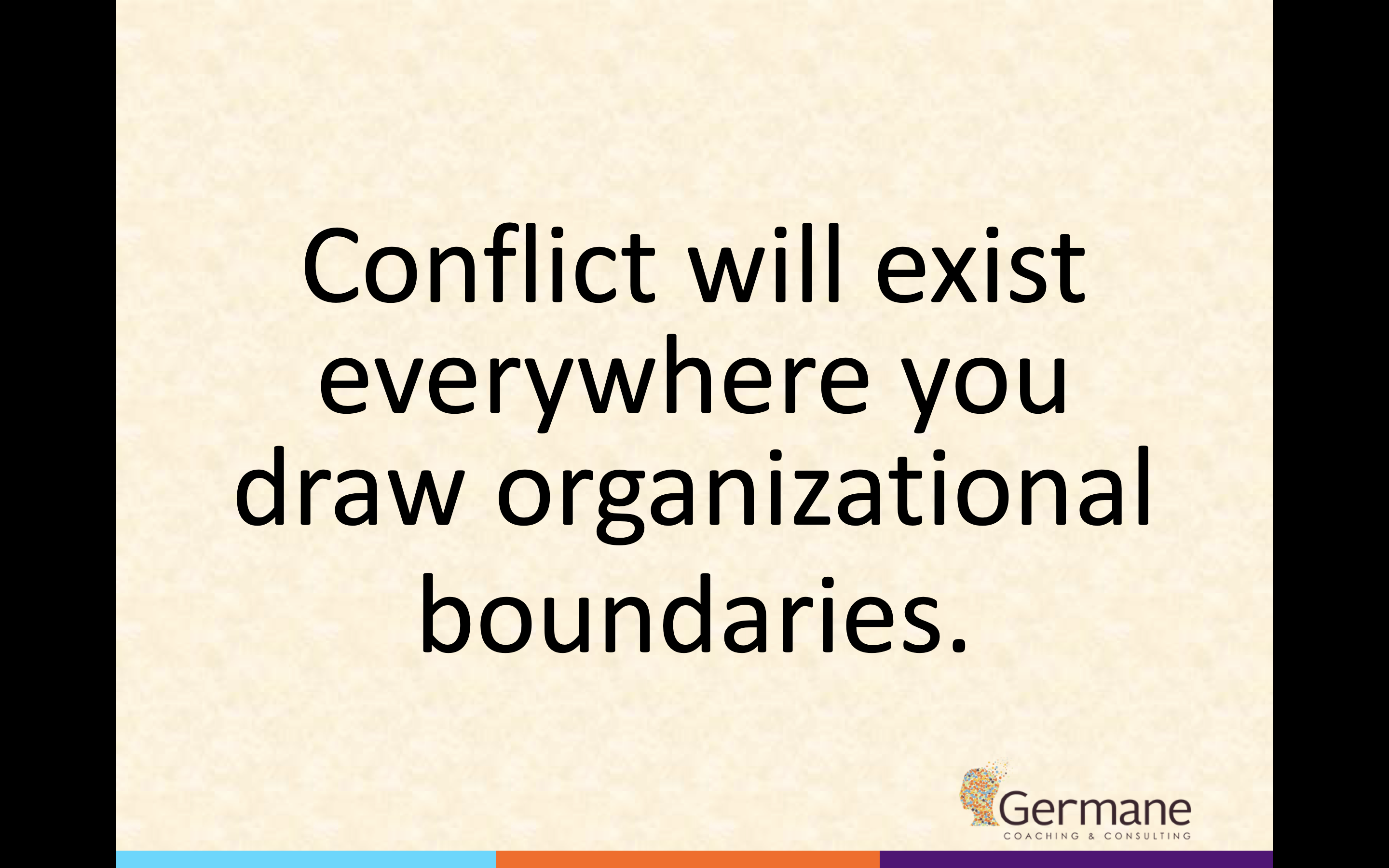In Fierce Conversations Susan Scott uses a beach ball to explain why collaborating with peer leaders is difficult. Each stripe represents a business unit, function or some other organizational slice.

Each leader is responsible, measured and rewarded for how well his/her stripe functions. Some companies also hold leaders accountable for how well the entire beach ball does. That portion of his/her compensation however, is typically small in comparison to the individual stripe. Additionally, she gets promoted based on achievements inside her stripe.
Why Collaborating with Peers is Difficult and Necessary
The beach ball, however, is dead in the water (pun intended) if any stripe springs a leak. Stripes exist only on the surface. The beachball/company itself is a single entity dependent on the un-divided air inside to maintain its beachballness.
Typically, CEOs are the only leaders accountable for the entire beach ball. But they aren’t close enough to people who do the work to make things happen, except by edict. Edict is best used when rarely used. But we need to collaborate all the time to keep the beach ball afloat. So peer leaders need to figure out this collaboration thing. If they get it right, collaboration happens every where else on the beach ball.
Structural Solutions for Collaborating with Peers Leaders
Let’s start with how we structure roles, goals, measurements and rewards. Imagine the beach ball is a paint company. The different stripes represent manufacturing, safety, finance, and employee engagement. Interdependencies and the need for collaboration exist where colors overlap.

If employees aren’t safe, engagement suffers, so safety and engagement overlap. Safety and finance overlap because we have to invest in equipment and training to reach safety targets. Goals any leader can achieve without other functions sit inside his/her stripe. All other goals are in the overlapping areas.
In this model we use ranges, not specific targets, to measure achievements. All leaders are collectively responsible for achieving designated ranges in overlapping goals. As a result, they have to collaborate to make needed tradeoffs. For example, the target range for operating costs is $600mil – $650mil. The safety range is 2 – 4% decrease in employee injuries. The entire leadership team, all stripes, decide to increase operating costs by $25mil to purchase safety equipment and related training. They also get creative and save $100K on the annual employee picnic by forgoing catering and doing a massive pot luck instead. This increases engagement and provides an opportunity for employees to break bread across diverse ethnic groups. They talk about various dishes, spices, countries. They exchange recipes and stories. Win. Win. Win.
Interpersonal Tips for Collaborating with Peer Leaders
Be actively interested in your peer’s goals and concerns. Ask how you can help. Name it when your roles and goals overlap and/or conflict. Suggest a collaborative approach that allows both of you to succeed. If that’s not possible agree to trade off the trade offs. The finance leader takes a hit to ensure safety goals are met. The safety leader looks for other opportunities to meet financial goals.


